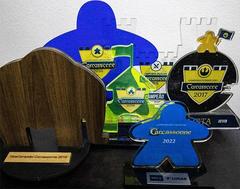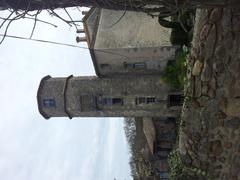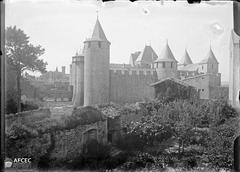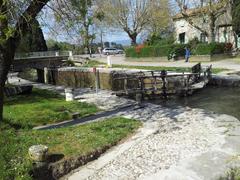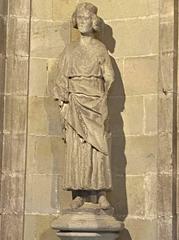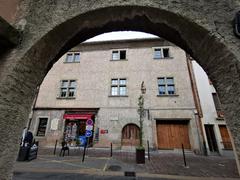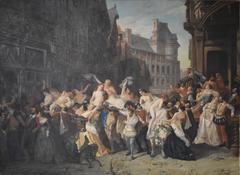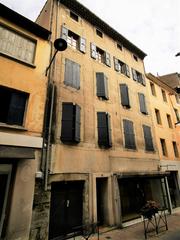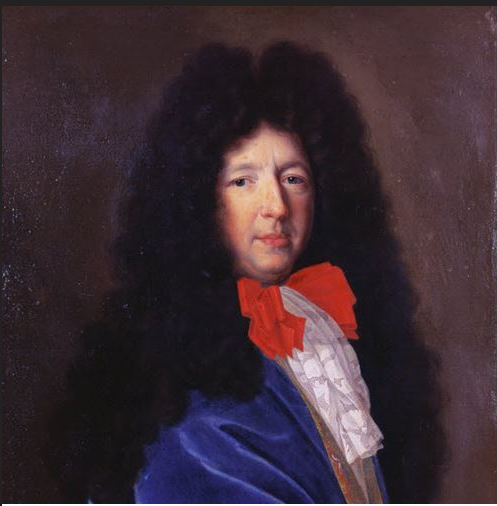
Château de Pennautier Visiting Guide: Hours, Tickets, History, and Travel Tips
Date: 24/07/2024
Introduction to Château de Pennautier
Nestled just 5 kilometers from Carcassonne in the Aude department of Occitanie, France, the Château de Pennautier stands as a magnificent testament to the region’s historical and architectural grandeur. Often referred to as the ‘Versailles of Languedoc,’ this historic monument offers visitors a glimpse into France’s rich past, from royal visits to economic significance. Built in 1620 by Bernard Reich de Pennautier, the Treasurer of the Estates of Languedoc, the château has witnessed centuries of history and has connections to notable figures such as King Louis XIII, who bestowed royal furniture upon the château during his visit in 1622 (Wikipedia). The château’s design was influenced by the renowned architect Louis Le Vau and its gardens were crafted by André Le Nôtre, both of whom were instrumental in the creation of the Palace of Versailles (Grand Carcassonne Tourisme). Today, the Château de Pennautier remains a family-owned estate, managed by Nicolas and Miren de Lorgeril, who represent the ninth generation of the family. The estate has embraced sustainable viticulture practices, earning labels such as ‘Terra Vitis’ and ‘High Environmental Value 3.’ Visitors to the château can explore its rich heritage, exquisite wines, and beautifully designed gardens, making it a must-visit destination for history enthusiasts and tourists alike (Lorgeril Wine).
Table of Contents
- Introduction
- Historical Background of Château de Pennautier
- Visitor Experience
- Frequently Asked Questions (FAQ)
- Conclusion
Historical Background of Château de Pennautier
Early Construction and Origins
The Château de Pennautier was constructed in 1620 by Bernard Reich de Pennautier, the Treasurer of the Estates of Languedoc. This period marked the end of the French Wars of Religion, a series of conflicts primarily fought between French Catholics and Protestants (Huguenots) from 1562 to 1598 (Wikipedia).
Royal Connections and Architectural Influence
In 1622, the château hosted King Louis XIII, who was so impressed by the residence that he gifted Bernard de Pennautier his traveling furniture. This royal visit significantly elevated the château’s status and led to further enhancements inspired by the grandeur of the Palace of Versailles. The architectural design of the château was influenced by Louis Le Vau, the architect of Versailles, and the gardens were designed by André Le Nôtre, the renowned landscape architect responsible for the gardens of Versailles (Grand Carcassonne Tourisme).
Expansion and Enhancements
The château underwent several phases of expansion and enhancement over the centuries. Bernard de Pennautier’s son continued the development, adding wings to the château and further embellishing its interiors. The estate also became a significant economic hub, with the establishment of the Royal Manufactures of Pennautier, which produced high-quality woolen cloths from the sheep of the nearby Montagne Noire. At its peak, the manufacture employed up to 2,000 workers (Wikipedia).
18th and 19th Century Developments
In the 18th century, the château’s vineyards gained prominence, with the wines of Pennautier being served at the table of the officers of King Louis XIV at Versailles. This period also saw the château becoming a center of art and culture, with Jacques de Beynaguet de Pennautier, an art enthusiast, enriching the château with collections of paintings and objects (Grand Carcassonne Tourisme).
Between 1835 and 1850, Rodolphe de Pennautier initiated a new phase of renovations, filling in the central courtyard and updating the interiors with Italian mosaic floors. He also redesigned the park in the English style, reflecting the landscaping trends of the time (Wikipedia).
20th Century to Present
In the early 20th century, Christian de Lorgeril and Paule de Pennautier undertook extensive renovations, including the removal of the North-East wing, which had been damaged by a fire. The château was officially listed as a historic monument on March 10, 1972, and its interior decor was listed on March 2, 1989 (Wikipedia).
Modern-Day Château de Pennautier
Today, the Château de Pennautier remains a family-owned estate, managed by Nicolas and Miren de Lorgeril, who represent the ninth generation of the family. The estate has embraced sustainable viticulture practices, earning labels such as “Terra Vitis” and “High Environmental Value 3.” The château’s vineyards continue to produce high-quality wines, and the estate offers wine tastings and tours, allowing visitors to experience the rich heritage and exquisite wines of the region (Lorgeril Wine).
Cultural and Historical Significance
The Château de Pennautier is not only a testament to the architectural and cultural grandeur of the Languedoc region but also a symbol of the region’s historical significance. Its connections to French royalty, its role in the economic development of the area through the Royal Manufactures, and its continuous evolution over the centuries make it a remarkable historical monument. The château’s gardens, designed by André Le Nôtre, and its architectural enhancements by Louis Le Vau, further cement its status as a miniature Versailles in the heart of Languedoc (Grand Carcassonne Tourisme).
Visitor Experience
Visiting Hours and Tickets
The Château de Pennautier is open to visitors on Wednesdays and Saturdays at 11 am for guided tours. It is advisable to check the official website for the most current visiting hours and ticket prices (Grand Carcassonne Tourisme).
Travel Tips and Nearby Attractions
Located just 5 kilometers from Carcassonne, visitors can easily explore the medieval city known for its well-preserved fortress, the Cité de Carcassonne. Other nearby attractions include the Canal du Midi, a UNESCO World Heritage Site, and the picturesque Montagne Noire.
Special Events and Guided Tours
The château hosts various special events, including receptions, weddings, and seminars. Guided tours include visits to the gardens and the King’s chamber, offering a glimpse into the château’s royal past. The estate also features a restaurant, La Table du Château, where guests can enjoy Mediterranean cuisine paired with the château’s wines.
Photographic Spots
The Château de Pennautier offers numerous picturesque spots perfect for photography. The gardens, designed by André Le Nôtre, provide a stunning backdrop, while the interiors, with their Italian mosaic floors and royal furnishings, offer unique photo opportunities.
Accessibility
The château is committed to ensuring accessibility for all visitors. It is advisable to check the official website for detailed information on accessibility options.
Frequently Asked Questions (FAQ)
What are the Château de Pennautier’s visiting hours?
Guided tours are available on Wednesdays and Saturdays at 11 am. Check the official website for the most current visiting hours.
How much do tickets to the Château de Pennautier cost?
Ticket prices vary, so it’s best to consult the official website for the latest information.
What nearby attractions can I visit?
Nearby attractions include the medieval city of Carcassonne, the Canal du Midi, and the Montagne Noire.
Can I host events at the château?
Yes, the château hosts various events, including weddings, receptions, and seminars.
Is the Château de Pennautier accessible?
The château is committed to accessibility. Check the official website for detailed information.
Conclusion
The Château de Pennautier stands as a beacon of historical and cultural heritage in the Languedoc region. Its architectural splendor, royal connections, and continuous evolution through the centuries make it a must-visit destination for history enthusiasts and tourists alike. For the latest updates, including visiting hours, ticket prices, and special events, visit the official website or follow the château on social media.

